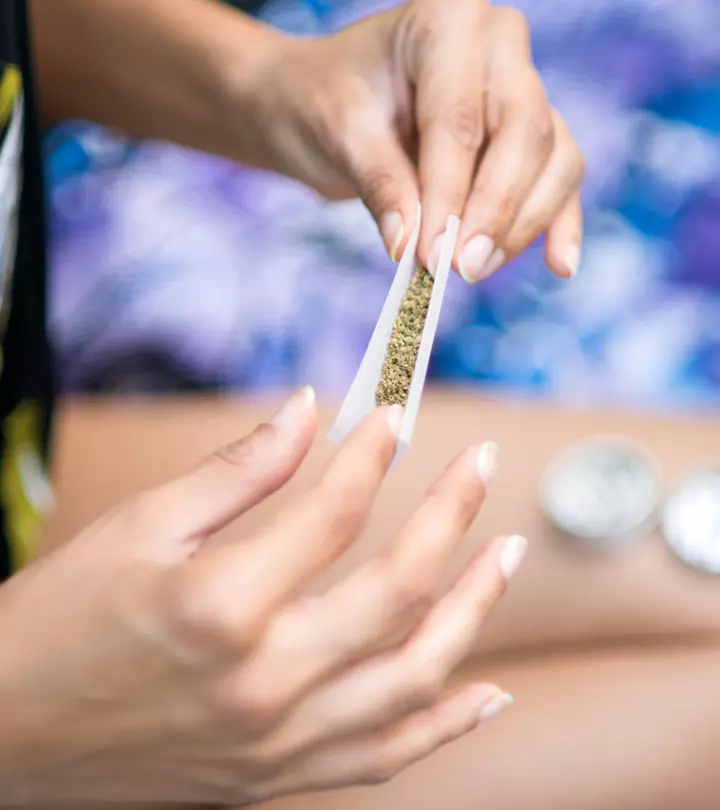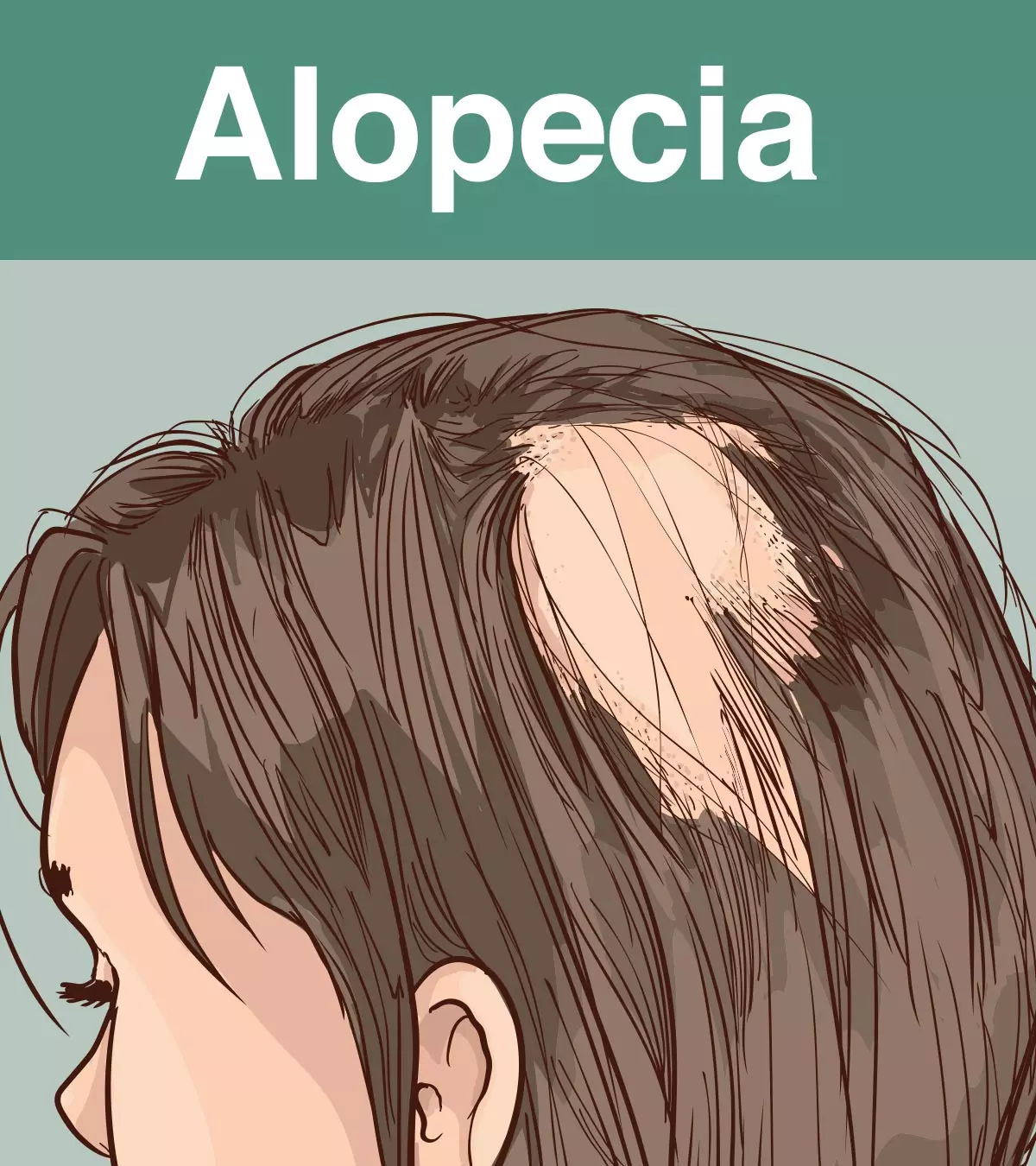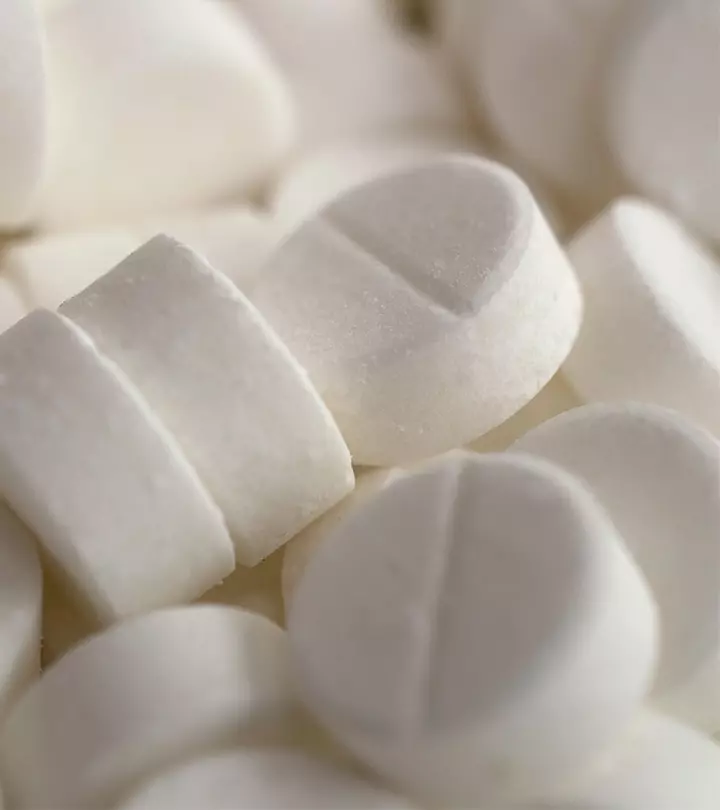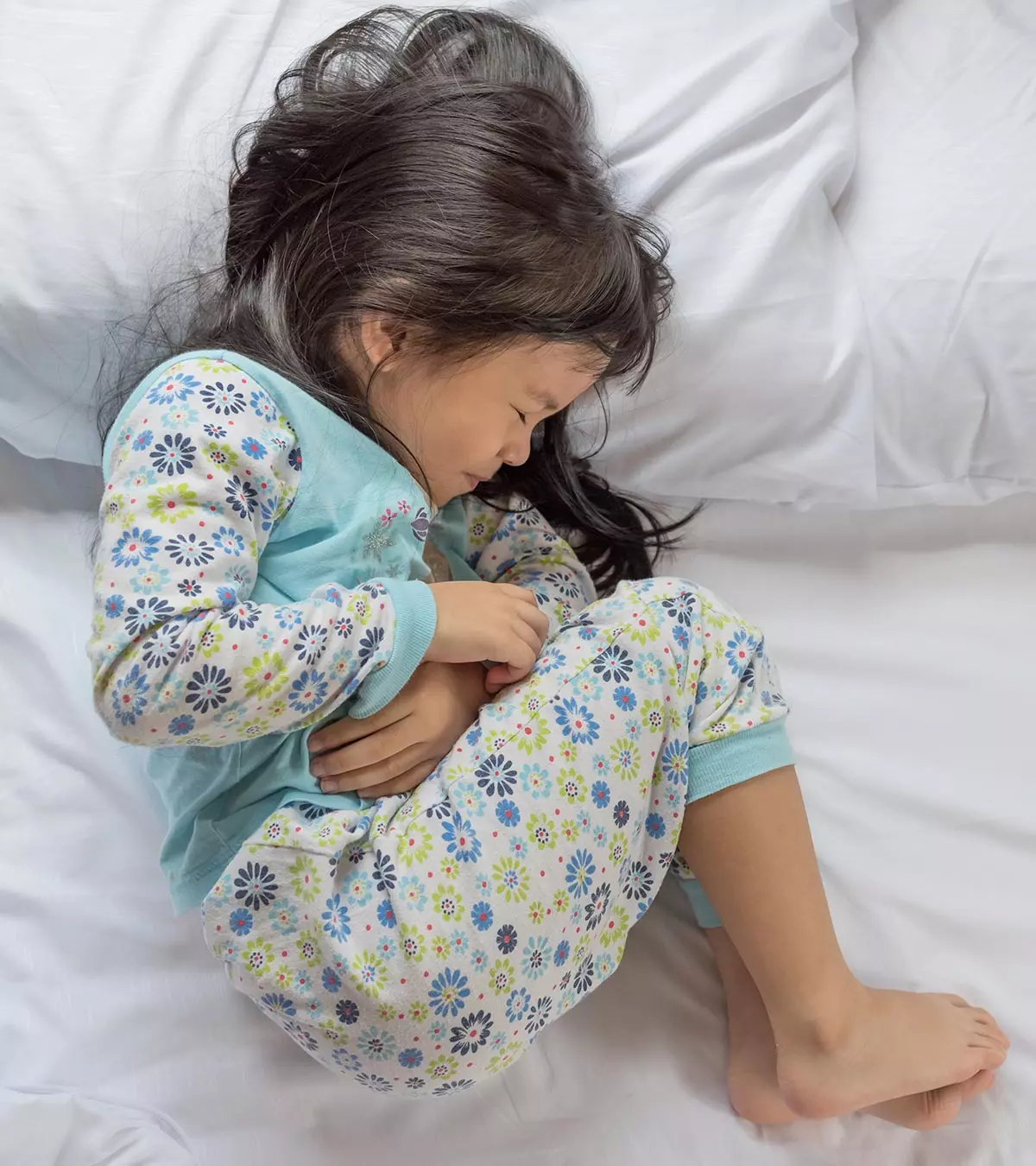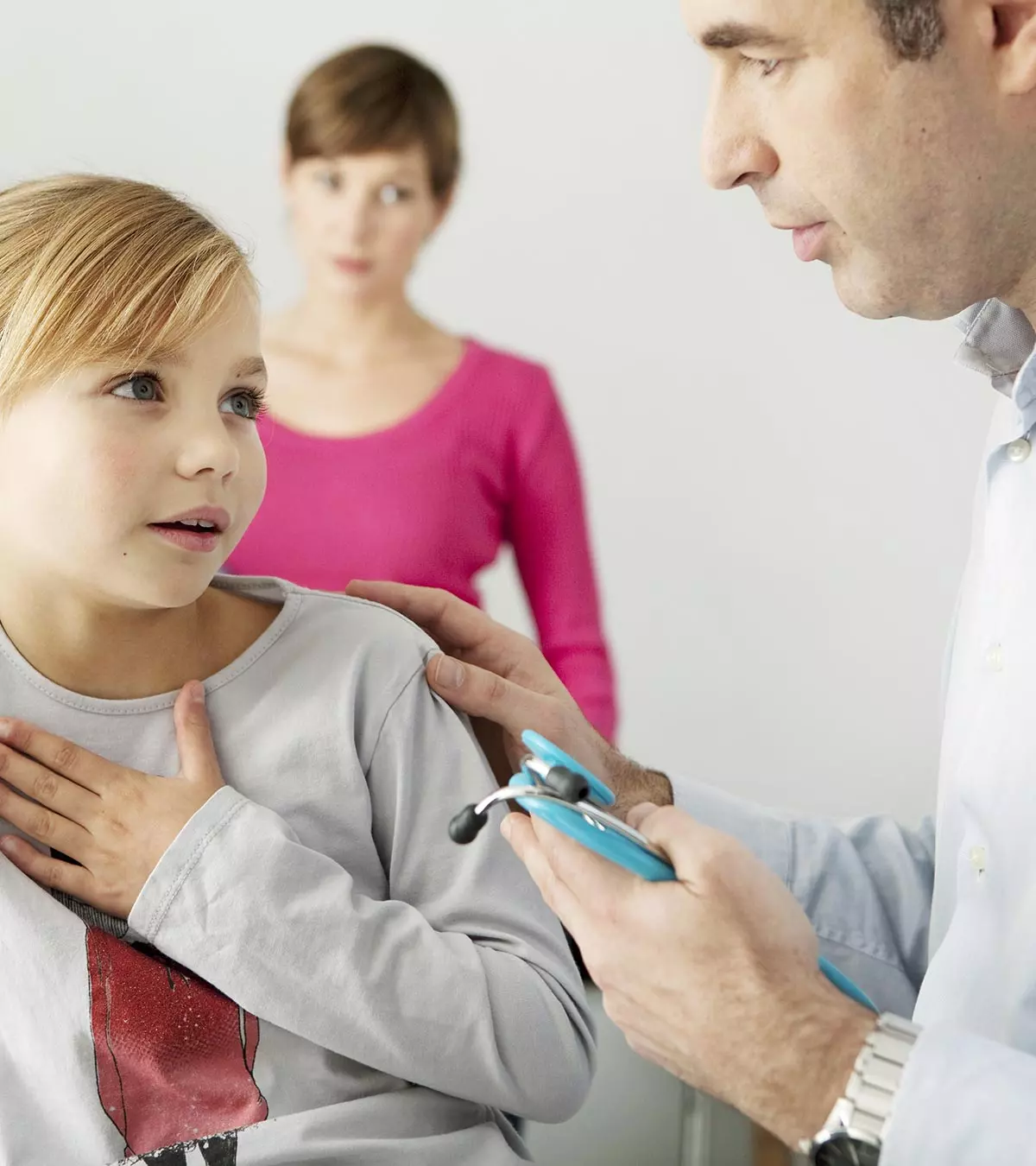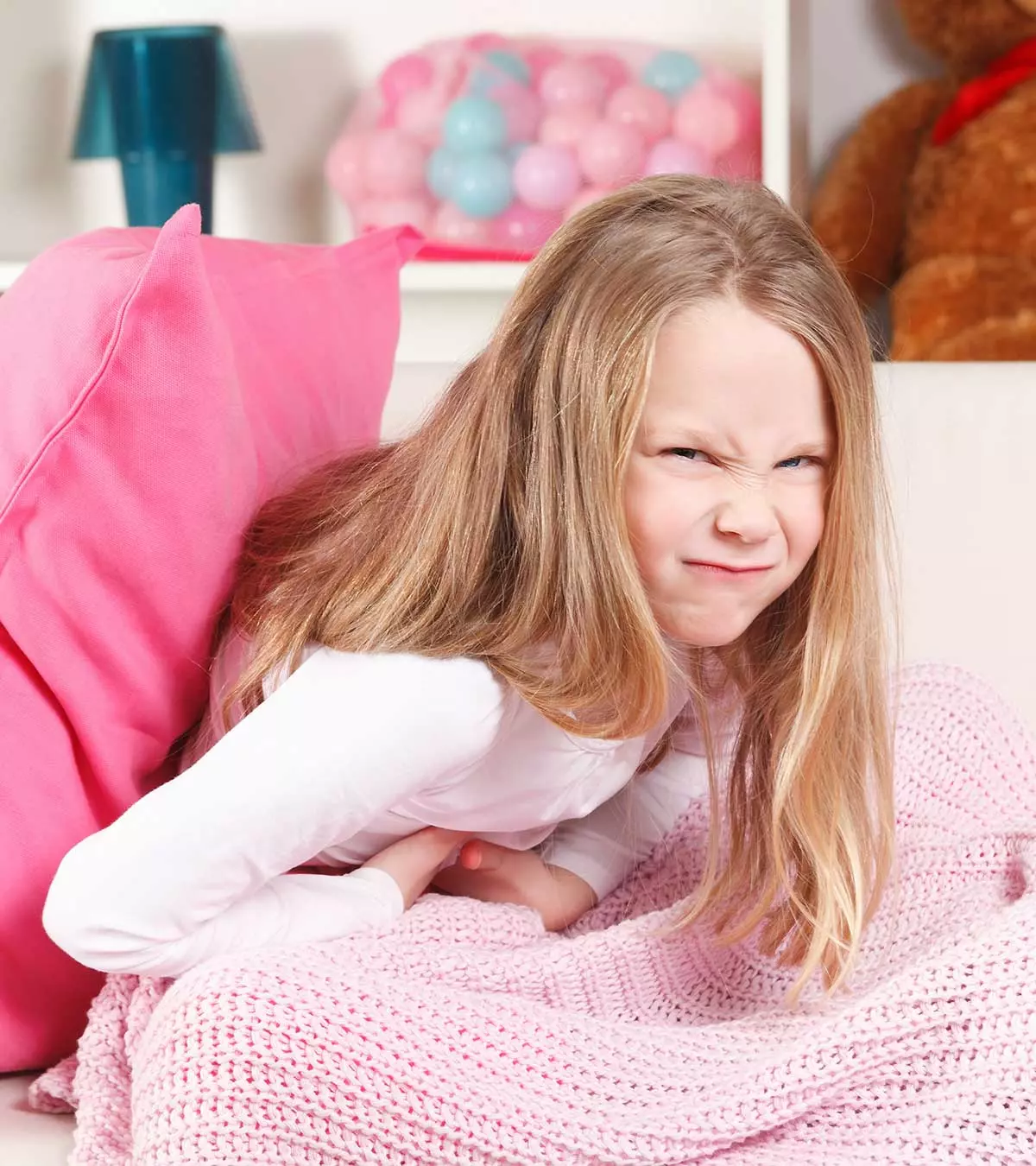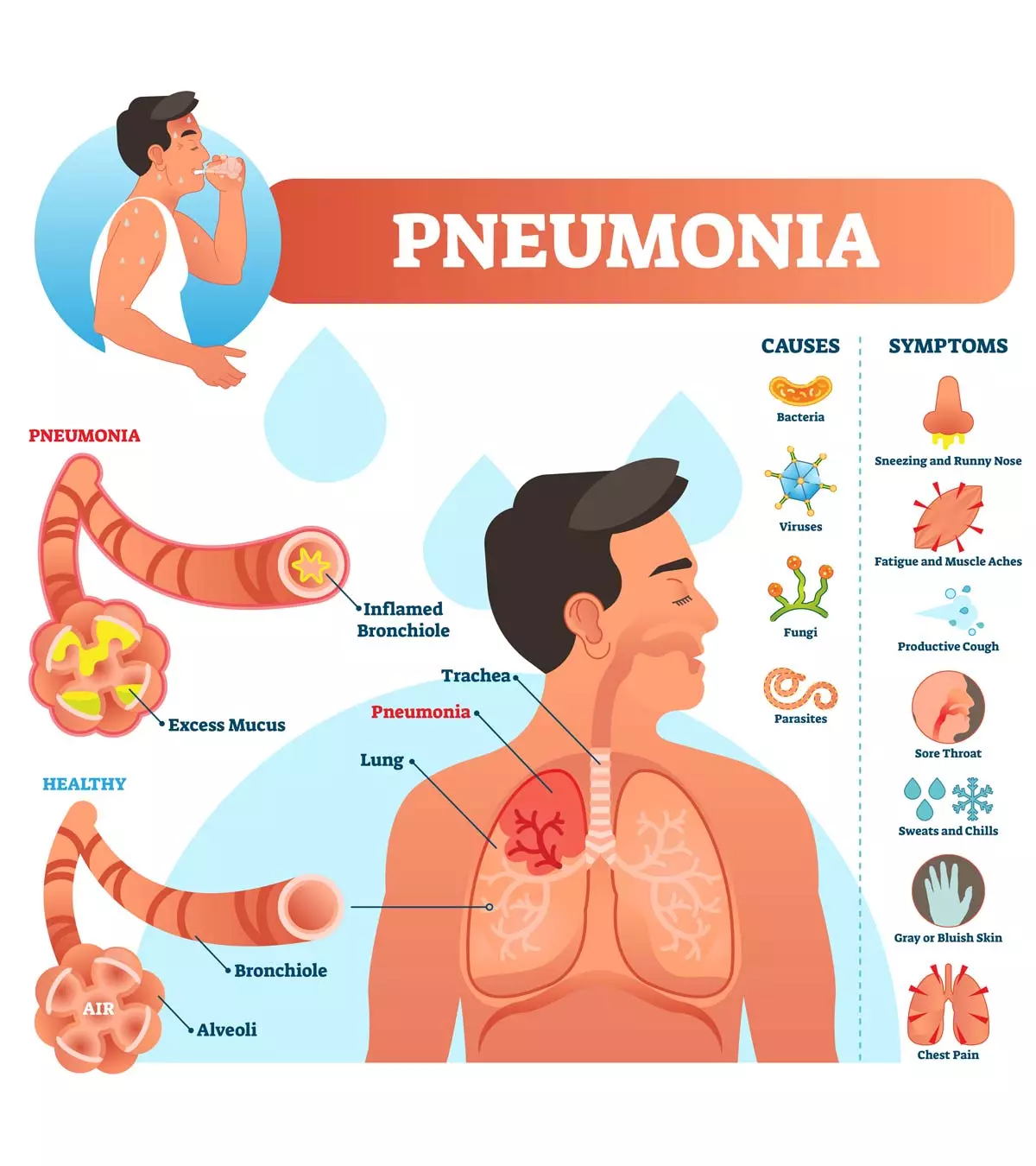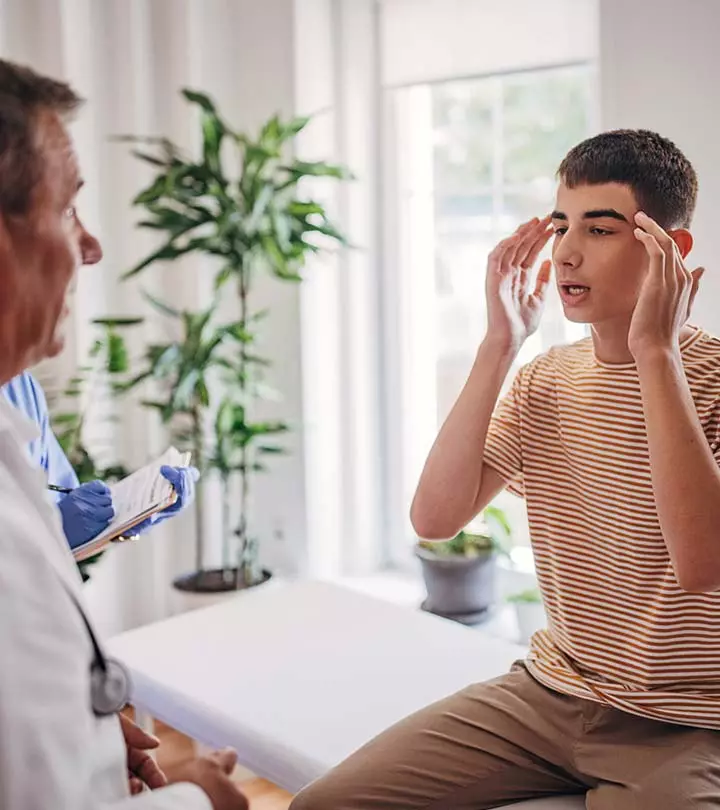
Image: iStock
Migraine is a complex inherited neurological condition. Although commonly associated with adults, it is not uncommon to encounter cases of migraines in teens. This moderate-to-severe headache usually lasts for a couple of hours to several days. It may occur twice to four times per month, severely affecting a teenager’s daily life.

Read this post to learn about migraine in teens, their types, causes, symptoms, and ways to treat and prevent this condition.
Key Pointers
- Migraine can occur in teens and adolescents as well, and it affects more girls than boys.
- Headache is the most notable symptom, and other symptoms include changes in mood, irritability, vertigo, and fatigue.
- Potential triggers of the condition include stress, poor sleep, changes in eating patterns, and bright lights.
- There is no cure for migraine, but it can be managed through doctor-prescribed medicines and healthy lifestyle choices for your teen, such as a healthy diet and sufficient sleep.
Prevalence Of Migraine In Teens
According to the American Academy of Pediatrics, about 28% of teenagers between the ages of 15 and 19 years experience migraines.
It is more prevalent in girls than boys, with an incidence rate of 8% among boys and 23% among girls (1). Many children with migraine may never receive a diagnosis or have delayed diagnosis since the condition is not often associated with adolescents and teenagers. Therefore, many teens may not know that they are experiencing migraines (2).
Types Of Migraine In Teens
Teens and adolescents can experience the following types of migraines (3).
- Migraine with an aura: It affects 15-30% of children and teenagers and is also known as classic migraine. Aura is any sensory anomaly that usually occurs 30 minutes before a migraine and may last up to 20 minutes. Some of the common auras include blurry or distorted vision. The teen may experience blind areas or feel like sensing brightly colored, moving or flashing lines or lights. Other auras include abrupt changes in the ability to hear, smell, taste, or touch. Some may also experience problems moving or speaking.
- Migraine without an aura: It is also called common migraine and affects about 60-85% of children and teens.
- Chronic migraine: It’s the most debilitating type of migraine, with 15 or more days with a migraine per month, and may last up to three months. In addition to headaches, the teen may have dizziness, sleep difficulties, anxiety, sadness, difficulty concentrating, and exhaustion.
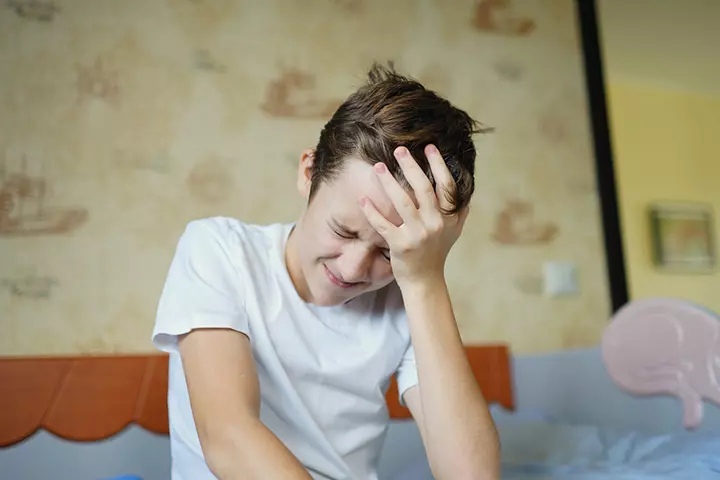
In rare cases, some teens may experience the following types of complex migraines (4).
- Basilar migraine is characterized by dizziness, fainting, and pain at the base of the skull.
- Hemiplegic migraine causes the teen to experience a tingling sensation in the arms and the face, usually on one side of the body. It may also cause weakness on one side of the body.
- Acute confusional migraine leads to sudden disorientation and confusion. This may often be triggered by a minor head injury.
- Complicated migraines are often accompanied by other neurological or neurology-triggered issues, such as vertigoiA sensation that you or your surroundings are moving or spinning , torticollisi A condition in which an infant holds their head tilted to one side , vomiting, abdominal pain, and speech problems.
 Quick fact
Quick factSymptoms Of Migraine In Teens

The symptoms of migraine may vary among teens of different ages. Below are some of the common symptoms of migraine in teens (4) (5).
- Severe headache that may continue for two hours to several days
- Pulsating or throbbing pain all over the head or worse on the sides of the head
- Pale skin color
- Irritability
- Changes in mood
- Sensitivity to sound and light
- Loss of appetite
- Nausea
- Vomiting
- Vertigo
- Abdominal pain
- Difficulty thinking and focusing
- Fatigue
Causes Of Migraine In Teens
The exact cause of migraine headaches is still unclear. However, there are various theories for the occurrence of this condition (6).
- Genetic nature: Studies show that teens with parents or siblings having migraine are at an increased risk of developing it themselves, suggesting that genetics play a significant role in the development of this condition.
- Brain malfunction: Migraine could be a result of brain malfunction that may involve neurotransmitters (brain chemicals) such as serotonini A neurotransmitter and vasoconstrictor that can stabilize mood . The cyclic changes in the secretion of these chemicals may lead to pain and migraine.
- Constriction and dilation of blood vessels: A spasm or constriction (narrowing) of blood vessels in the neck and head followed by dilation of the blood vessels minutes to hours later may cause migraine. The dilation may increase the pressure inside the skull, resulting in headaches.
Factors That Trigger Migraine In Teens
The following factors and conditions may trigger migraine in teenagers (1) (7).
- Stress and fatigue
- Lack of sleep or irregular sleeping habits
- Menstruation in girls
- Noise and bright light
- Dietary changes and changes in normal eating patterns
- Consumption of too much caffeine and caffeine withdrawal
- Heat and other extreme weather changes
- Certain medicines
- Changes in routine
- Strenuous exercises
Syed Muzaffarsha, a blogger who has grappled with migraines since his teenage years, recounts the specific triggers that have been responsible for his migraine episodes. He reflects, “Frankly speaking, I wasn’t expecting that my way of assuring my first place at high school would be the very root of my problem, to migraine. After years of standing up to little Miss Migraine, I realized that, three years ago, my orthodox method of studying until I became fatigued was the trigger to my long-lasting migraine (i).”
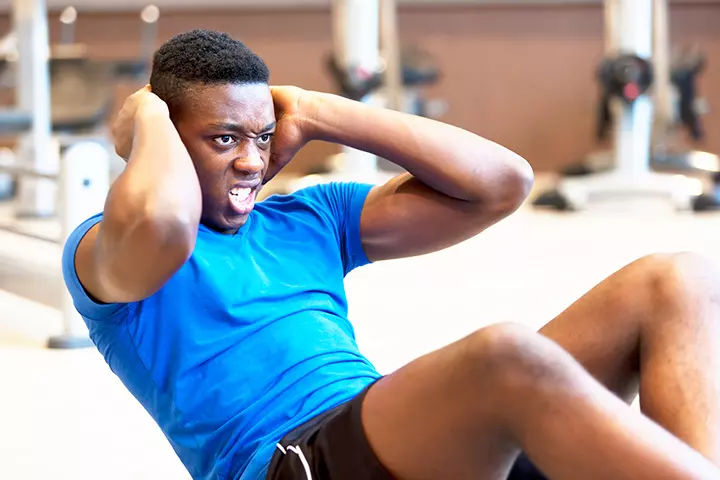
When To Call A Doctor
Consult a doctor or pediatric neurologist if the teen’s headaches interfere with their daily life. You should also contact a doctor if the following conditions accompany the teen’s headaches (8).
- Neck stiffness
- High fever
- Vomiting
- Loss of balance
- Behavioral changes
- Increased confusion
- Seizures
- Loss of consciousness
Diagnosis Of Migraine In Teens
Diagnosing a migraine during the teenage years may be challenging due to the varying presentations of migraine and the different presentations during different ages. Headache may not be the most typical presentation of migraine in adolescents.
There are no specific tests for migraine, but your doctor can make a diagnosis by gathering the following information (4).
- Learning specific details about the headache, such as its severity, frequency, identifiable triggers, and associated symptoms
- Taking the teen’s medical history, including past or current medications
- Checking the family history of headaches
 Point to consider
Point to considerAdditional tests are seldom needed unless the teen has other associated symptoms or if the headaches were triggered by an event, such as a dosage of medication or injury. In such cases, physical examination, blood tests, and MRI or CT scans may be recommended to determine underlying issues or the extent of the problem (9).
Treatment For Migraine In Teens

There is no cure for migraine. Medications may be prescribed for symptomatic relief, such as reduction of vomiting or pain. Pain medicines may be prescribed for severe headaches that interfere with daily activities. Some of the common medicines to manage migraine in teens include the following.
- Acetaminophen
- Ibuprofen
- Naproxen
- Triptans; a category of selective serotonin receptor agonists
Avoid self-medication to manage migraine due to its chronic nature. The doctor can prescribe the safe daily limits of these medicines to avoid side effects.
 Caution
CautionSome non-pharmaceutical treatments for migraine can include the following (1)(3).
- Cognitive-behavioral therapy (CBT):It focuses on teaching coping skills, thinking positively, observing healthy habits, and relaxation techniques to help your child cope with migraine discomfort.
- Biofeedback: It teaches the teen to become aware of biological functions or events, such as heart rate and muscle tension, and use the information to relax or manage the migraine triggers.
- Stress reduction: It can be conducted with the help of a counselor or mental health professional and may involve stress-reduction techniques such as exercise and yoga.
Home Remedies For Migraine In Teens
You may try interventions at home to manage migraines in teens. These remedies can help manage existing migraine episodes, and also aid in the prevention of future ones (10) (11).
- A healthy diet with adequate amounts of minerals and vitamins can be good for neurological health. Avoid diets rich in potential triggers such as caffeine, high salt and fat content, monosodium glutamate, and artificial sweeteners.
- Adequate hydration with water can help keep the mind fresh and may make it easier to manage teen stress, which is one of the triggers of migraine.
- Sufficient sleep is essential for the health of all body systems, and it can reduce stress and fatigue.
- Regular exercise for about 30 minutes each day can benefit the body and mind, making it easier to manage the migraine triggers.
- Gentle massage of the head can help reduce the intensity of the migraine. Teens who experience migraine with an aura may try self-massage when the aura begins.
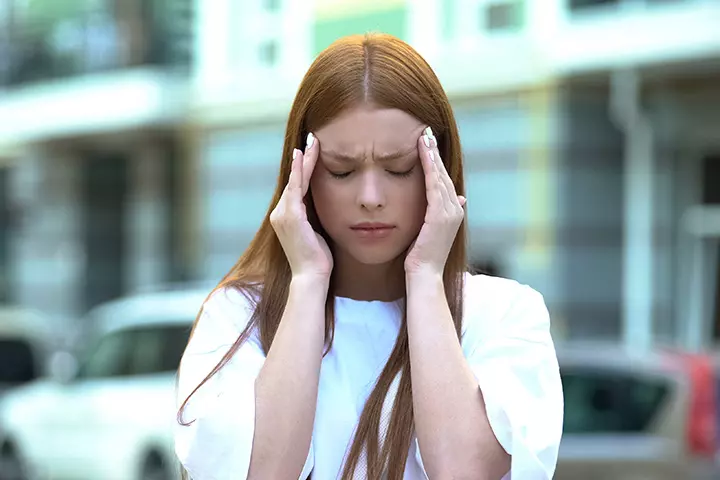
- Hot shower before bed can help the body relax and reduce anxiety.
You may encourage the youth to maintain a migraine diary where they can write the time and potential trigger of the migraine. It can help identify the triggers, enabling better management of their migraines.
Complications Of Migraine In Teens
Migraines in teens are manageable and seldom cause any further problems. Nevertheless, migraines may lead to the following complications in some cases, especially if they are not diagnosed on time (12) (13) (14).
- Acute migraine turning to chronic migraine
- Lasting symptoms of aura phase, even when the headache dissipates
- Migraine followed or accompanied by seizures
- Structural changes in the brain
- Increased risk of depression or anxiety disorder
Frequently Asked Questions
1. Do teenage hormones cause migraines?
A study conducted on adolescent girls found that during the onset of puberty, hormone level changes may trigger puberty headaches or migraines (15). Thus, it can be stated that hormones can act as a causative agent of migraines in teenagers.
2. Which foods trigger migraines?
Common food items that are known to trigger migraines are as follows (16):
- Food preservatives
- Monosodium glutamate
- Aged cheese
- Cured meats
- Yeast extracts
- Chocolate
3. Can dehydration cause migraines?
The American Migraine Foundation lists dehydration due to temperature changes as one of the top causes of migraine (17). Thus, you should encourage your child to stay hydrated and avoid severe heat to evade such triggers.
Migraine affects many teens and causes headaches severe enough to affect their daily activities. Chronic migraine is usually the most severe form of this condition. While severe headache is the most notable symptom of migraine, other symptoms include irritability, fatigue, and vertigo. Timely treatment with doctor-prescribed medicines and home remedies, such as adequate sleep and a healthy diet can support the teen in managing their migraine better, thus preventing any long-term adverse effects.
Infographic: How To Identify Migraine In Teens?
Understanding migraine symptoms and triggering factors in teens is crucial in assisting them in managing their illness and reducing the frequency and intensity of their headaches. So if your teen is experiencing migraine, look through the infographic below to learn about the symptoms and factors that can trigger this common condition.
Some thing wrong with infographic shortcode. please verify shortcode syntaxIllustration: Types Of Migraine In Teens Causes Signs And Treatment

Image: Stable Diffusion/MomJunction Design Team
Personal Experience: Source
MomJunction articles include first-hand experiences to provide you with better insights through real-life narratives. Here are the sources of personal accounts referenced in this article.
i. Over–thinking trigger migraine: Talking from experience.https://medium.com/@syedmuzaffarsha/over-thinking-trigger-migraine-talking-from-experience-ced7d21dd087
References
- Migraine Headaches in Children & Teens: Parent FAQs.
https://www.healthychildren.org/English/health-issues/conditions/head-neck-nervous-system/Pages/Migraine-Headaches-in-Children.aspx - Migraine in children and adolescents.
https://www.nationalmigrainecentre.org.uk/understanding-migraine/factsheets-and-resources/migraine-in-children-and-adolescents/ - Migraines in Children and Adolescents.
https://my.clevelandclinic.org/health/diseases/9637-migraines-in-children-and-adolescents - Migraine headache.
https://www.rch.org.au/kidsinfo/fact_sheets/Migraine/ - Migraine in the Adolescent Patient Overview.
https://americanheadachesociety.org/news/migraine-in-the-adolescent-patient-overview - Marielle A Kabbouche and Deborah K Gilman; (2008); Management of migraine in adolescents.
https://www.ncbi.nlm.nih.gov/pmc/articles/PMC2526375/ - Migraine prevention in children and teenagers.
https://www.ncbi.nlm.nih.gov/books/NBK328457/ - Migraine in Children.
https://americanmigrainefoundation.org/resource-library/migraine-children/ - Ubaid Hameed Shah and Veena Kalra; (2009); Pediatric Migraine.
https://www.ncbi.nlm.nih.gov/pmc/articles/PMC2778404/ - Natural Remedies to Get Rid of a Headache.
https://selecthealth.org/blog/2025/04/natural-remedies-headache - Teenagers and Headaches.
https://familydoctor.org/teenagers-and-headaches/ - Joanne Kacperski et al.; (2016); The optimal management of headaches in children and adolescents.
https://www.ncbi.nlm.nih.gov/pmc/articles/PMC4710107/ - Vincenzo Belcastro et al.; (2011); Migralepsy hemicrania epileptica post-ictal headache and “ictal epileptic headache”: a proposal for terminology and classification revision.
https://www.ncbi.nlm.nih.gov/pmc/articles/PMC3094666/ - Asma Bashir et al.; (2013); Migraine and structural changes in the brain: A systematic review and meta-analysis.
https://n.neurology.org/content/81/14/1260.short?sid=22f7842c-76e4-4862-828d-de3e45825361 - Vincent T. Martin et al.; (2017); Ovarian hormones age and pubertal development and their association with days of headache onset in girls with migraine: An observational cohort study.
https://pubmed.ncbi.nlm.nih.gov/28474986/ - Migraine and Diet.
https://americanmigrainefoundation.org/resource-library/migraine-and-diet/ - Top 10 migraine triggers and how to deal with them.
https://americanmigrainefoundation.org/resource-library/top-10-migraine-triggers/ - Megan J. Crawford et al., (2009); Menstrual Migraine in Adolescents.
https://headachejournal.onlinelibrary.wiley.com/doi/10.1111/j.1526-4610.2009.01347.x - Headaches and Migraines: When to see a Neurologist.
https://www.beaumont.org/conditions/headaches-and-migraines-when-to-see-a-neurologist - Treatment -Migraine.
https://www.nhs.uk/conditions/migraine/
Community Experiences
Join the conversation and become a part of our nurturing community! Share your stories, experiences, and insights to connect with fellow parents.
Read full bio of Dr. Neema Shrestha
Read full bio of Reshmi Das
Read full bio of Dr. Ritika Shah
Read full bio of Dr. Joyani Das






